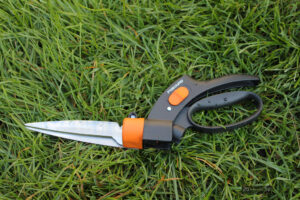Key Takeaways
- Stretching straps are a valuable tool for seniors seeking to improve flexibility and mobility.
- Choosing a stretching strap with the right features can enhance your stretching routine.
- Specific stretching exercises, when done correctly, can significantly improve a senior’s range of motion.
- Regular stretching can lead to long-term health benefits, including reduced risk of falls and improved daily functioning.
- It’s essential to prioritize safety and adapt exercises to individual needs to prevent injury.
Unlock Your Potential: Flexibility for the Golden Years
As we age, our bodies naturally become less flexible, but that doesn’t mean we have to accept this as an inevitable decline. Flexibility is key to an active and healthy lifestyle, especially over 60. It helps with everyday tasks, from tying shoelaces to reaching for that top shelf. Stretching straps are a simple yet effective way to maintain and improve flexibility, making them a must-have for any senior’s fitness arsenal.
The Vital Role of Flexibility for Seniors
Why focus on flexibility? Because it’s about more than just being able to touch your toes. Flexibility helps maintain the range of motion in your joints, ensuring that you can move freely and without pain. This is crucial for maintaining balance and coordination, which in turn reduces the risk of falls—a common concern for seniors.
Moreover, flexibility aids in the performance of daily activities and can alleviate chronic pain conditions often experienced in later years. It’s a cornerstone of physical health that supports your independence and quality of life.
Selecting the Right Stretching Strap
Choosing a stretching strap might seem straightforward, but there’s a variety to consider. You want a strap that’s durable, easy to grip, and has the right length for your body. Most importantly, it should be comfortable against your skin since you’ll be using it regularly. Look for straps with loops or adjustable sections to help you gradually increase your stretch without overextending.
Exercise Techniques That Enhance Senior Flexibility
When it comes to improving flexibility, consistency is key. Using a stretching strap, you can perform a variety of exercises that target different muscle groups. For example, a seated hamstring stretch can alleviate tightness in the back of your legs, which is essential for walking and maintaining balance.
Here’s how to do it:
- Sit on the floor with your legs extended in front of you.
- Loop the strap around the sole of one foot and hold the strap with both hands.
- Gently pull on the strap to lean forward, keeping your back straight, until you feel a stretch in your hamstring.
- Hold for 20-30 seconds, then release and repeat on the other side.
This simple exercise can make a world of difference in your daily life.
Best Practices for Safe and Effective Stretching
Safety first! Always warm up your muscles before stretching to reduce the risk of injury. A warm-up could be a light walk or some gentle movements that get the blood flowing. Also, listen to your body and never push a stretch to the point of pain. It’s about gradual improvement, not instant results.
Remember, stretching should be a regular part of your routine. Aim for at least 10 minutes of stretching every day. Consistency will help you see the benefits faster.
The Features of an Ideal Stretching Strap
What makes a stretching strap ideal for seniors? It’s not just about the color or material—it’s about functionality and comfort. An ideal strap is typically between six to ten feet long, allowing for a range of stretches without being unwieldy. It should be made from non-elastic, durable fabric that can withstand regular use. The strap should also feature loops or blocks to assist with grip and help maintain poses without extra strain on the hands or fingers.
Review of Popular Stretching Straps
There are several stretching straps on the market that have garnered positive reviews from the senior community. The OPTP Stretch Out Strap is praised for its durable construction and instructional booklet that comes with it. Another favorite is the Tumaz Stretch Strap, which offers a high number of loops and comes in various colors. For those looking for padded comfort, the Clever Yoga Strap might be the perfect fit with its thick, soft cotton blend.
When comparing these options, consider what aligns best with your needs. Is it the number of loops, the type of material, or perhaps the length of the strap? Each of these factors plays a role in finding the strap that will become an integral part of your stretching routine.
Step-by-Step Stretching Exercises
- Seated Hamstring Stretch
- Standing Quadriceps Stretch
- Shoulder and Arm Stretch
- Calf Stretch
- Side Stretch
These exercises target key muscle groups that can benefit significantly from stretching, helping to maintain your flexibility and mobility.
Let’s take the Seated Hamstring Stretch further. After securing the strap around your foot, straighten your leg as much as possible. As you gently pull on the strap, you should feel a stretch, but not pain. Breathe deeply and hold the stretch, allowing your hamstring to slowly loosen. For more guidance on exercises and techniques, explore this complete guide for seniors.
For the Standing Quadriceps Stretch, stand next to a wall for balance and loop the strap around your ankle. Pull your heel towards your buttocks, keeping your knees together and your back straight. This stretch is excellent for the front of your thighs.
Warm-Ups to Begin Your Stretching Session
Before you dive into using your stretching strap, it’s crucial to prepare your body with some warm-up exercises. Warm-ups gradually increase your heart rate and circulation, loosening up the joints and increasing blood flow to the muscles. This can include a brisk walk, marching in place, or arm circles. Spend about 5-10 minutes on warm-ups before you start stretching.
Remember, a good warm-up can make your stretching session more effective and reduce the risk of injury. It’s an essential start to any exercise routine.
Example: Mary, a 72-year-old retiree, begins her stretching routine every morning with a five-minute walk around her garden. This not only warms up her muscles but also connects her with nature, enhancing her overall sense of well-being.
After warming up, you’re ready to use your stretching strap for a series of exercises that will help you maintain your flexibility.
Stretching Routines Using Your Stretching Strap
With your muscles warmed up, it’s time to put your stretching strap to use. A common routine includes stretches that target the shoulders, chest, legs, and back. By incorporating a variety of stretches, you ensure that you’re working on overall body flexibility.
For shoulders and arms, try the Overhead Shoulder Stretch. Hold the strap in both hands above your head, then widen your grip as you bring the strap behind your back. This move opens up the shoulder joints and stretches the muscles across your chest.
Don’t forget about your lower body. The Lying Hip Stretch is excellent for opening up the hips and stretching the outer thigh. Lie on your back, place your foot in the strap, and cross that leg over the opposite thigh, pulling gently towards you with the strap.
Safety and Effectiveness: A Dual Focus
Safety should always be your top priority when stretching. This means listening to your body and respecting its limits. Stretching should feel good, not painful. If you feel sharp pain or discomfort, ease up on the stretch.
Effectiveness comes from practice and patience. Over time, you’ll notice an improvement in your flexibility and a decrease in stiffness and pain. Regular stretching with a strap can make everyday movements easier and more fluid.
How to Stretch Without Strain
To stretch without strain, always start slowly and increase the intensity gradually. Use your strap to help control the stretch and prevent overreaching, which can lead to muscle strains. Remember to breathe normally throughout your stretches; holding your breath can lead to tension in the muscles.
Focus on maintaining a steady rhythm and taking your time with each stretch. The goal is to relax into the stretch, allowing the muscle to lengthen naturally without forcing it.
Integrating Flexibility Training into Your Daily Routine
Make stretching a daily habit. Incorporate it into your routine, perhaps in the morning to wake up your body, or in the evening to wind down. You can even stretch while watching TV or after a walk. The key is to make it as routine as brushing your teeth.
By regularly using a stretching strap, you’re not just working on your flexibility; you’re investing in your mobility and independence for years to come. So grab that strap and take the first step towards a more limber you.
Frequently Asked Questions
When it comes to senior fitness and flexibility, questions abound. Let’s tackle some of the most common queries to give you a clearer understanding of how stretching straps can be a game-changer for your health and well-being.
- What are the best stretching straps for seniors?
- Why is flexibility important for seniors?
- Can stretching straps help with arthritis or other senior-related health conditions?
- How often should a senior practice stretching exercises?
- Are there any specific stretching exercises recommended for seniors?
These questions are at the forefront of many seniors’ minds as they seek ways to improve their health and maintain independence. So, let’s dive in and provide some clarity.
What are the best stretching straps for seniors?
The best stretching straps for seniors are those that combine durability, comfort, and ease of use. Features such as non-elastic material, multiple loops for versatility, and a comfortable length are essential. Some highly recommended options include:
- The OPTP Stretch Out Strap, known for its sturdy construction and helpful instructional guide.
- The Tumaz Stretch Strap, which offers a high number of loops for different grip positions.
- The Clever Yoga Strap, favored for its thick, soft cotton blend that provides extra comfort during stretches.
When choosing a strap, consider your specific needs, such as the type of stretches you plan to do and any physical limitations you might have.
Example: John, who has been dealing with lower back pain, found that the Tumaz Stretch Strap’s multiple loops allowed him to perform stretches that specifically targeted his problem area without putting undue strain on his hands or arms.
Why is flexibility important for seniors?
Flexibility is crucial for seniors because it directly impacts their ability to perform daily activities and maintain independence. A flexible body is less prone to injuries, recovers faster, and can help manage chronic pain. Additionally, flexibility contributes to better posture, balance, and coordination, which can reduce the risk of falls.
It’s not just about physical health, either. Flexibility exercises can also have a positive impact on mental well-being, reducing stress and promoting relaxation.
Can stretching straps help with arthritis or other senior-related health conditions?
Yes, stretching straps can be particularly beneficial for seniors with arthritis or other health conditions that affect mobility. Stretching can help to maintain joint range of motion, reduce stiffness, and alleviate pain associated with arthritis. It’s always important, however, to consult with a healthcare professional before starting any new exercise regimen, especially if you have health concerns.
For those with arthritis, stretching straps allow for gentle, controlled stretches that can be adjusted to accommodate limited mobility and comfort levels.
How often should a senior practice stretching exercises?
Seniors should aim to practice stretching exercises daily. Consistency is key in maintaining and improving flexibility. Even 10-15 minutes a day can make a significant difference. Incorporate stretches into your morning routine to start your day with movement, or use them as a way to relax in the evening.
Are there any specific stretching exercises recommended for seniors?
Yes, there are several stretching exercises that are particularly beneficial for seniors. These include:
- Hamstring stretches to maintain leg flexibility and prevent lower back pain.
- Chest openers to improve posture and breathing.
- Hip flexor stretches to keep hips and lower back supple.
- Shoulder stretches to aid in upper body mobility and ease of reaching overhead.
- Neck and spine stretches to reduce tension and maintain spinal health.
Using a stretching strap can help seniors perform these exercises more effectively by allowing for a deeper stretch and better control.



